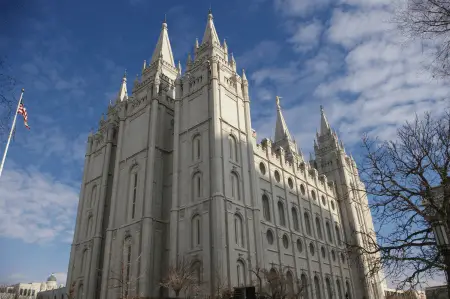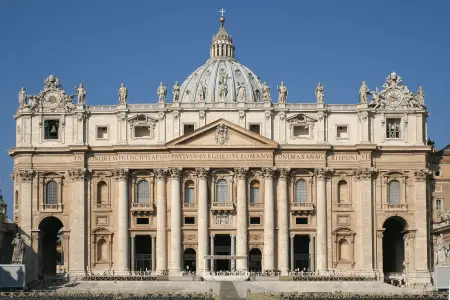Mormons and Catholics are two unique groups that comprise much of America’s religious landscape. Both churches count prominent figures in society among their members. While they have similar goals and a few teachings in common, they have significant differences in terms of doctrines and practices.
Summary Table
| Mormons | Catholics |
| Canon includes the Old and New Testaments, The Book of Mormon, Doctrine and Covenants and The Pearl of Great Price | Canon includes the Old and New Testaments |
| Priesthood is for all worthy Mormon men; two types of priesthood – Aaronic and Melchizedek | Priesthood is for celibate males who receive Holy Orders |
| The President of the Church is a seer, prophet and revelator; he is God’s spokesperson to the world | The Pope is a direct successor of the apostle Peter and is concurrently the Bishop of Rome |
| Jesus Christ is part of the Godhead, but distinct from God the Father | God is the Father, the Son (Jesus Christ), and the Holy Spirit |
Definitions
Mormons

“Mormon” is the common term for members of the Church of Jesus Christ of Latter-Day Saints, or LDS Church. The LDS Church has its roots in the movement started by Joseph Smith in 1830. Smith claimed that a vision of the angel Moroni led him to a set of golden plates that held the teachings of ancient prophets. Smith’s translation of the golden plates, called The Book of Mormon, is an integral part of Mormon doctrine. Other sources of Mormon doctrine include the Bible, Doctrine and Covenants and The Pearl of Great Price. Mormons believe in continuous revelation through LDS prophets, such as the church President, who guides the church through changing times while restoring the original teachings of Christ.
One of these original teachings concerns Christ himself. The LDS Church teaches that Jesus Christ was born in the flesh as the only-begotten son of God the Father. However, he is not of the same substance as God.
They also believe that John the Baptist directly bestowed priesthood upon Joseph Smith. Today, two priesthood divisions exist in Mormonism. The first is the Aaronic priesthood, which consists mostly of young men who have the permission to perform certain ordinances, such as baptism. The second is the Melchizedek priesthood, which is a higher office for older men who move up from the Aaronic order. The President of the LDS Church is a member of the Melchizedek office of Apostle, and Mormons consider him a seer, a prophet and a revelator. He is also God’s spokesperson to the world.
The LDS Church was first headquartered in New York, but moved westward a number of times to Ohio, Missouri and Illinois in order to escape persecution. After Joseph Smith’s death, his successor Brigham Young and his congregation settled in Utah. Mormons now make up the majority of the population in that state, and the LDS Church also has a significant presence in the rest of the United States. Mormon men also go on missions outside the country.
Catholics

“Catholic” is a general term for members of the Roman Catholic Church. Catholic tradition claims that Jesus Christ himself proclaimed the apostle Peter as the “rock” upon which the church will be built. After the death and resurrection of Christ, the apostles spread his teachings throughout the Roman Empire. By the year 50 A.D., Christianity was already established in Rome, where tradition holds that Peter became the first bishop. Catholics believe that after the death of the Apostle John, God’s revelation reached its fullness and thus ceased.
The early Christians went through periods of persecution under Roman rule. Their peculiar, secretive rituals aroused suspicion among the rest of the population. However, when the emperor Constantine adopted Christianity in 313 A.D., the persecution stopped. The next few centuries were complicated; theologians argued over topics such as the nature of Christ and the celibacy of priests.
Catholics hold the mainstream Christian belief that God is three “persons”. These are God the Father, God the Son (Jesus Christ) and the Holy Spirit, which are all distinct yet are of the same substance.
Some of the early Christian leaders were married. However, in the 12th century, the Roman Catholic hierarchy decided against ordaining married men as priests or bishops. Traditionally, Catholics consider the bishop of Rome as the direct successor of the apostle Peter. The Bishop of Rome is also known as the Pope, the head of the Church.
The Catholic church in its present form is a result of the Great Schism of 1054 between the eastern and western branches of Christianity. During the 16th century, theological differences resulted in another split within the western church. This split was due to the movement called the Reformation, and the various Protestant sects arose from the movement. Despite the rise of Protestantism, Catholic missionaries from Spain, Portugal and France continued to carry their faith to their respective colonies. As a result, Catholicism is the largest single branch of Christianity.
Mormon vs Catholic
Revelation
Mormons believe that revelation did not stop with the Bible. Instead, revelation continues in the modern age, starting with the Book of Mormon and continues with revelations to Church apostles. In contrast, Catholics teach that the Bible contains the fullness of revelation. While individuals experience private revelations, they do not replace nor add to what has already been revealed to the prophets and apostles.
Priesthood, Leadership, and Celibacy
The most stark difference between Mormons and Catholics lies in their clergy. Most young Mormon men take on the Aaronic priesthood, and some eventually move up to the Melchizedek priesthood. The highest office of the Melchizedek priesthood, the Apostle, requires that the holder be married. As the President of the LDS church has to be an Apostle himself, he must be married as well.
While Catholic men who wish to become permanent deacons can be married, those who want join the priesthood are required to take a vow of celibacy. The Pope is chosen from a group of bishops, who are also celibate leaders.
Concept of Hell
Another difference involves the concept of hell. Mormons believe that hell is a horrible place where wicked spirits are imprisoned. Those who do evil things end up in hell.
On the other hand, Catholics believe hell is a place or state of eternal torment. Wicked people who are there also feel they are separated from God.
The Afterlife
Both Mormons and Catholics have separate beliefs about the afterlife. For instance, Mormons believe that when they die, they will go to a spirit world and undergo preparation. Good souls go to spirit paradise, while wicked souls are sent to hell. At the resurrection, their souls will be reunited with their bodies. At this time, Mormons believe they will be given a second chance.
On the other hand, Catholics believe a person goes to hell or heaven, depending on whether they were wicked or evil during their lives. Catholics also believe in a place called Purgatory. In Purgatory, they believe souls go through purification before getting into heaven.
The Nature of God
Mormons and Catholics also differ on the nature of God. Mormons believe that the Father, Son, and Holy Spirit are three different entities and that they’re on one mission.
However, Catholics believe that the Father, Son, and Holy Spirit are three individuals in one. Their concept of God also differs from Mormons. Catholics believe God does not have a body, and there is only one God who is a pure spirit; He created the world. They also believe that God is holy and good, all-powerful and that He’s worthy of our worship.
Conversely, Mormons believe that God has a physical body and that He is our Heavenly Father.
The Nature of Christ
Mormons believe that Jesus Christ was the only-begotten son of God the Father and is part of the Godhead, but was born in the flesh and is not of the same substance.
In contrast, Catholics believe that God is three distinct persons – Father, Son and Holy Spirit –that are of one divine substance.
Video
Watch the video below for an interesting panel discussion between Catholics and Mormons:





